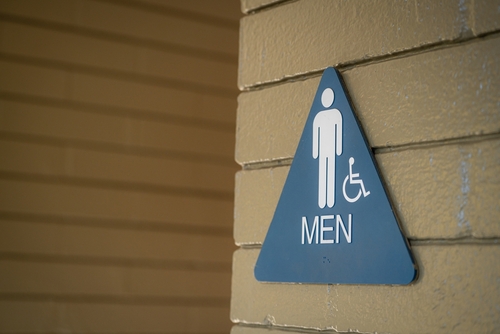Studies have shown that restroom cleanliness has a major impact on business reputation, meaning facilities managers must ensure a pleasant restroom experience for all customers and workers. That includes eliminating any off-putting smells.

Are your men’s restrooms encountering urinal malodor issues? Klaus Reichardt, CEO and founder of Waterless Co. Inc., recommends managers and cleaning professionals try the following fixes:
Clean Walls and Floors
Splatter is a concern with all types of urinals, whether they’re waterless or flushing models. The most common splatter landing spots are nearby walls, partitions, and floors. Regularly scheduled cleaning of these areas helps eliminate odors.
Replace the Cartridges
If your restroom uses waterless urinals for increased sustainability, they likely have specially designed cartridges at the bottom of the urinal bowl. Also known as a trap, they are designed to temporarily hold urine and send it down the drain. Plus, they contain a sealing liquid that blocks sewer odors from being released into the restroom. Depending on use and cartridge type, these should be replaced every three to six months, and the sealing liquid replenished as needed.
Unclog the Urinal
If a flushing urinal is clogged, overflowing, or not draining correctly, the urinal needs to be removed from the wall and the pipeline snaked. Although Reichardt suggests clogging is a more common problem with flushing urinals, it can also happen with waterless models. On a waterless urinal, remove the cartridge, flush a bucket of water down the line, and insert a new sealant-filled cartridge.
Clean the Urinal
While water can address a clogging issue, it should not be used to clean a waterless urinal. This can flush out the sealing liquid in the cartridge. Instead, thoroughly clean the inside and outside of the urinal with an all-purpose cleaner and a disinfectant if needed. Typically, waterless urinals need only be cleaned with an all-purpose cleaner and wiped clean, according to Reichardt.
Fix Before Retrofits
Many waterless urinals installed today are retrofits. The old flushing urinal is removed, and a new waterless urinal is installed. Managers should know that conventional urinals can leave deposit build-up in the plumbing below the urinal. For this reason, the drainage system should be snaked before the no-water urinal is installed.
“Odor problems apply to conventional and no-water-using urinals,” says Reichardt. “No matter what type is installed, if there is urinal malodor, there usually is a reason. The steps discussed here will help in either case.”
